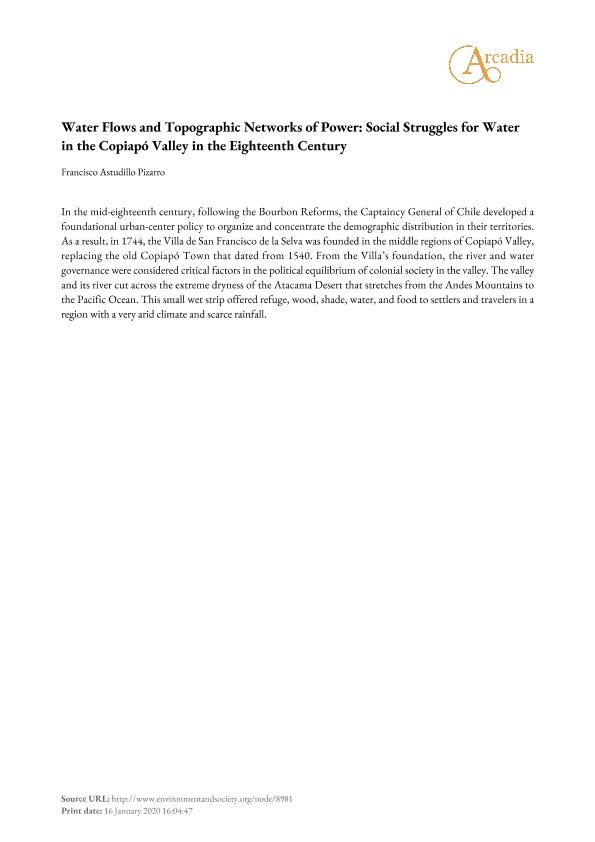Artículo
Water Flows and Topographic Networks of Power: Social Struggles for Water in the Copiapó Valley in the Eighteenth Century
Fecha de publicación:
01/2020
Editorial:
Rachel Carson Center for Environment and Society
Revista:
Environment & Society Portal
e-ISSN:
2199-3408
Idioma:
Inglés
Tipo de recurso:
Artículo publicado
Clasificación temática:
Resumen
In the mid-eighteenth century, following the Bourbon Reforms, the Captaincy General of Chile developed a foundational urban-center policy to organize and concentrate the demographic distribution in their territories. As a result, in 1744, the Villa de San Francisco de la Selva was founded in the middle regions of Copiapó Valley, replacing the old Copiapó Town that dated from 1540. From the Villa’s foundation, the river and water governance were considered critical factors in the political equilibrium of colonial society in the valley. The valley and its river cut across the extreme dryness of the Atacama Desert that stretches from the Andes Mountains to the Pacific Ocean. This small wet strip offered refuge, wood, shade, water, and food to settlers and travelers in a region with a very arid climate and scarce rainfall.
Palabras clave:
TOPOGRAPHY
,
POWER
,
WATER
,
SOCIAL STRUGGLES
Archivos asociados
Licencia
Identificadores
Colecciones
Articulos(CCT - ROSARIO)
Articulos de CTRO.CIENTIFICO TECNOL.CONICET - ROSARIO
Articulos de CTRO.CIENTIFICO TECNOL.CONICET - ROSARIO
Citación
Astudillo Pizarro, Francisco Segundo Cristian; Water Flows and Topographic Networks of Power: Social Struggles for Water in the Copiapó Valley in the Eighteenth Century; Rachel Carson Center for Environment and Society; Environment & Society Portal; 2; 1-2020; 1-5
Compartir




